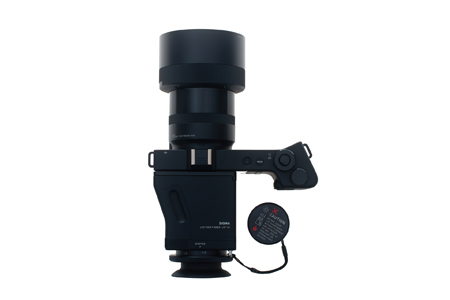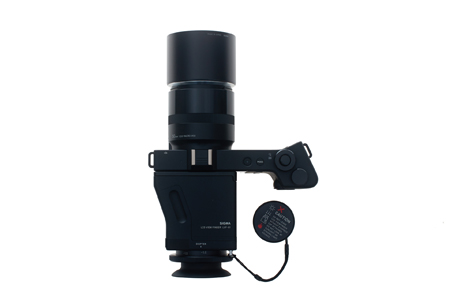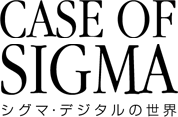
SIGMA dp3 Quattro | SHOOTING REPORT
dp3 Quattro SHOOTING REPORT 01 | dp3 Quattro SHOOTING REPORT 02




More friendly dp3 Quattro
When I tested the dp2Q/dp1Q, I realized the Quattro generation has become much friendlier than the older generations. I used to have difficulties in figuring out the best color tones with them and had to set the ISO as low as possible to avoid the noise. Yet, when the conditions were met, they delivered the superb images that I cannot get from elsewhat. They required steps like the ones for an 8x10 camera, even though they were compact cameras. I had to deal with so many restrictions in shooting the 8x10 camera, and I felt the same way when using those old SIGMA cameras. However, it’s so easy to shoot with the new Quattro generation to the point I feel disappointed. Yes, it finally became like an ordinary compact camera... well, except for the appearance. :)
The dp3 Quattro inherits the same lens, 50mm F2.8, which is equivalent to 75mm in 35mm format, from the DP3 Merrill. And, I figure they didn’t need to change the lens because of the excellent performance. I feel the same way. It’s extremely sharp wide open and the aberration is thoroughly minimized. And, partly because of the focal length, I feel it delivers more emotional bokeh than the other dp Quattro cameras. Compared to the DP3 Merrill, everything has changed. The image quality has become more standardized and neutralized while it continues to have the overwhelming resolving power and the realistic color reproduction that are uniquely stemming from the Foveon sensor. I kind of feel the tonal gradation and color reproduction is a little lower than the Merrill, but I can also say they look simpler and purer. And, this leads to the better image handling, I suppose. The JPEG image quality has improved significantly and the battery life has extended drastically compared to the older generations, or slightly extended compared to the ordinary cameras from other manufacturers. :) With one battery, I was able to take 100 to 150 shots from morning till sunset. The larger body size has improved holding and I think it matches the way this camera should be used. Also, the bigger dials add to the better handling. Plus, the new LCD has better image quality.
Using my own term, Foveon cameras captures “stagnation.” For example, they capture stagnant air just as it is. In reality, what we see isn’t as clear and contrasty as pictures. So, the older models capture the sunlight as blue. When I tested the dp1Q and the dp2Q, I felt they overcome the issue and I was curious to check if the dp3Q behaves just like its siblings. And, it did. If I took the first five shots with the former models, the color would shift significantly to yellow. Or, with ISO400, they would have so much noise to give difficulties in developing. But, with the Quattro, I don’t have to be nervous anymore. What an improvement.

The dp3Q captures the reality seen by eyes




When using the dp3Q, I feel much more excited than when using the former models. And, I know SIGMA lovers understand what I mean because the new improved LCD displays the very image just as it is, just as you see on this screen. The texture depiction is breathtaking as usual and now it plays it faithfully on the rear screen at the shooting site. There’s no need to “demosaic” because each pixel receives colors and light vertically. This means it accurately captures the location of subjects, near or distant. And, it also accurately captures the shapes of subjects, round or square. I guess they lead to the real texture drawing and it’s because of the resolution, color reproduction, and tonal reproduction of the Foveon sensor. I took the shot in the restaurant at ISO800 and I do see noise on the original full-sized image. But, it handles the noise better to the extent I feel like using up to ISO800 regularly. If you need higher sensitivity performance, go for other cameras. But, I promise the power of the dp3Q outweighs the negatives.

For the dp3 Quattro, they don’t look just wet. It senses their humidity and temperature.





The ultimate weapon for the maximum image quality
In a way, the dp3Q may best demonstrate the power of the Foveon sensor because the long 75mm lens delivers larger bokeh. The Foveon sensor has a higher sampling rate than a bayer sensor. The images have more depth because one pixel captures all colors and luminance information. Plus, the bokeh makes the image quality even more appealing.
Was something lost by shifting from Merrill to Quattro? There’re differences in the tonal gradation and color reproduction. What I can affirm here is that the Merrill models require higher skills in digital photography as well as approach to photography, which directly reflects mentality, physical condition, and philosophy of the photographer. In this sense, higher functionality is always better and this is what the dp3 Quattro has. And, as a user of Merrill and Quattro models, let me say this. No other cameras deliver such powerful images. Even though the LCD has improved dramatically, you may wish if it had more pixels. Or, you may find other rooms for improvement. But, I’m sure that the Quattro models have reached to the level that I can recommend to the potential first-time SIGMA camera users with confidence. The JPEG images straight from the camera are already inspiring. And, once they develop the RAW data, they can’t wait to shoot more.
( Photography / Text : K )

I tried the “LCD VIEW FINDER VF-1”! It transforms the camera to something like the ISS. It shows focus peak so clearly and realizes the ultimate eye-level shooting. Pressing the eyepiece on the eye helps reduce camera shake. The loupe section can be slid off when you don’t use it. Highly recommended!

I also tested the dedicated tele-conversion lens FT-1201 (the last 4 images). The focal length becomes equivalent to 90mm in 35mm format. Amazingly, this guy doesn’t know how to lose resolution!
( 2015.3.3 )
